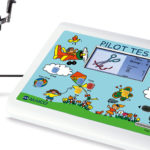Just thinking about the cold, dry winter air might send chills down your spine. But what else does this bitter air bring? Nosebleeds. During the winter months, upper respiratory infections are more frequent, the temperature and humidity fluctuate more dramatically, and going from a cold exterior environment to a warm, heated interior can cause drying and changes in the nose, thus making it more susceptible to bleeding. (MedicineNet)
As a school nurse you may see an uptick of students visiting your office over the next few months with nosebleeds. Below is some helpful information to help you treat bloody noses:
What causes a nosebleed?
According to the National Center for Biotechnology Information (NCBI), about 60% of people have experienced a nosebleed, but only 10% of nosebleeds are serious enough to warrant medical treatment. Causes of nosebleeds include:
- Irritation due to allergies, colds, sneezing or sinus problems
- Cold or dry air
- Blowing or picking the nose forcefully
- Injury to the nose, such as a broken nose or an object stuck in the nose
- Sinus or pituitary surgery
- Deviated septum
- Chemical irritants including medicines or drugs that are sprayed or snorted
- Overuse of decongestant nasal sprays
- Oxygen treatment through nasal cannulas
Most nosebleeds occur on the front of the nasal septum (the anterior) and can be easy to stop. Less commonly, nosebleeds occur higher on the septum or deeper in the nose such as in the sinuses or the base of the skull (the posterior) and are harder to control. (MedicineNet)
How do you stop a nosebleed?
Whether you’re dealing with an anterior or posterior nosebleed, it’s vital to remain calm. It can be alarming, especially for children, to suddenly have a bloody nose. But the calmer you are in experiencing and treating a nosebleed, the easier it will be.
Once calm, sit up straight and lean your body and your head slightly forward. Pinch the nostrils together and apply direct pressure with the thumb and index finger for about 10 minutes. The pressure will help stop the bleeding of a less serious, anterior nosebleed. If the nosebleed is more serious, it may require medical attention.
When is it necessary to seek emergency medical care?
If the nosebleed does not stop after 20 minutes, occurs after a head injury and/or there is the possibility of a broken nose, seek emergency care as soon as possible. Not only will the nosebleed require more attention to get under control, but there could be other injuries to treat such as a skull fracture or a broken bone.
Even though the winter air brings more frequent nosebleeds, they can happen year-round, especially for people living in warm climates. You can shop MacGill’s selection of nosebleed treatment products by clicking here and if you have any questions, please don’t hesitate to contact us.





